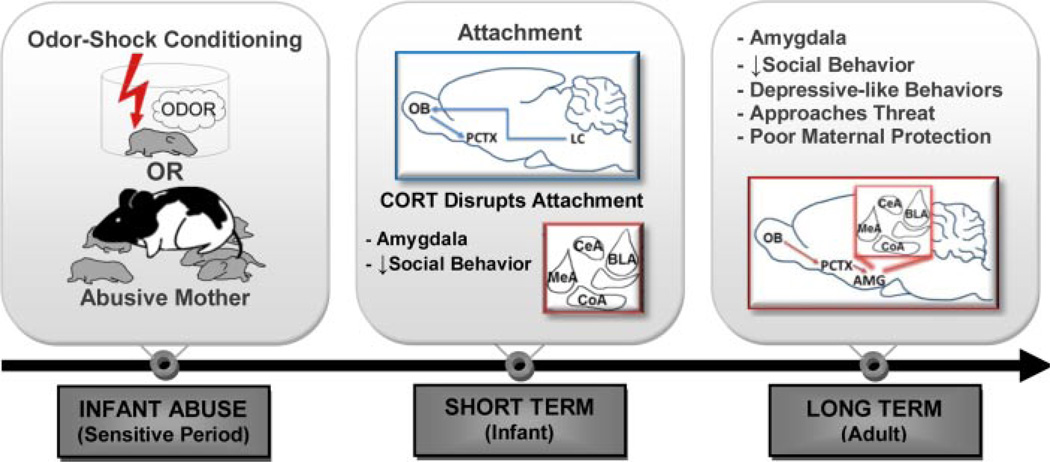FIGURE 1.
Schematic of short- and long-term effects following infant abuse. Infant abuse during the sensitive period (until PN10), using our odor-shock conditioning or abusive mother paradigms of abuse, produces converging neurobehavioral deficits across development. Despite abuse, infants form a strong attachment to their caregiver, which is mediated by the olfactory bulb (OB), anterior piriform cortex (PCTX), and locus coeruleus (LC). However, in infants, corticosterone (CORT) uncovers the effects of early life abuse. Heightened CORT in infancy prematurely engages the amygdala, and produces disrupted interactions with the mother in abused pups. By adulthood, the long-term effects of infant abuse on amygdala-dependent behaviors include decreased social behavior, increased depressive-like behaviors, as well as increased approach to predator odor, and poor maternal protection in a threatening situation.

